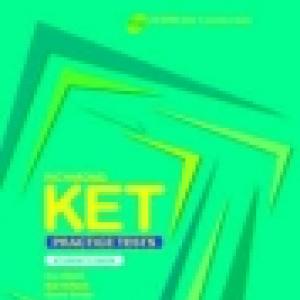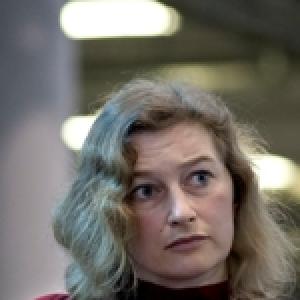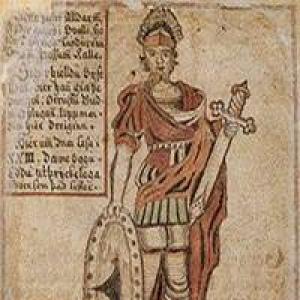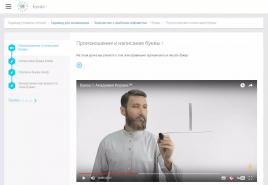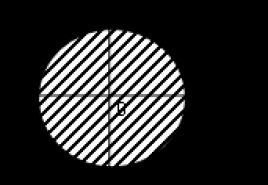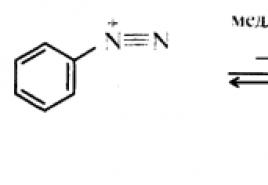Learning Irish. Most unusual language: Irish
- Adobe package
- Microsoft Office Suite
- VKontakte
In 2014, Yuri Andreychuk organized the only Irish language courses in Russia. A rare and difficult language, spoken by no more than 15% of the Irish population, has managed to find its way to the hearts of Muscovites of all ages and occupations - from students and housewives, to professional linguists and translators. Now Yuri regularly trains several dozen people. Against the backdrop of a steady increase in interest in Irish culture and language, Andreychuk intends to expand courses and open a language school in the next few years.
Yuri Andreychuk, 42 years old, entrepreneur, Irish language teacher, graduate of Moscow State University. Long-time organizer of cultural events and popularizer of Irish culture in Russia. Founder and leader of the traditional Irish music group “Army of the Seeds” (since 1998). Began teaching Irish privately in 2003. In 2014, he opened the first Irish language courses in Russia.
How the idea of private courses and a language school came about
Yuri Andreychuk has been teaching Irish for 12 years. Although in Ireland it, along with English, is considered official state language, currently Irish in varying degrees owns only 10 to 15% of the country's population. Irish is taught in schools and universities, and is used on radio, television and other media, but is spoken by only about 80,000 people every day. This is less than the population of the average Moscow region.
In Moscow, Andreychuk has this rare language studied privately different categories of people. Someone wanted to learn how to read books in Irish in the original. Someone was going to sing songs in Irish. Some sought to make friends in Ireland and communicate with the Irish in their native language in order to better understand their culture. But regardless of the initial reasons, most of those who started learning Irish sooner or later common interest to the country, as it deepened, it necessarily developed into a deeper interest in the language. “The Irish language is the key to a deeper understanding of culture, history and life in Ireland. Knowing the language helps us perceive Ireland, its traditions and its people beyond the stereotypes imposed on us popular culture. “You can live in Ireland without the Irish language, but you cannot truly understand the country,” Yuri Andreychuk is convinced.
“You can live in Ireland without the Irish language, but you cannot truly understand the country.”
Until three years ago, he did not consider the Irish language as a business project. But in 2013, the number of beginners coming to him for private lessons increased so much that it required the creation of permanent courses. “At that moment I realized that I had to gradually, based on the experience of Irish teachers, build a teaching system on my own. And exactly the way you want to do it, depending on the needs of students and the goals they set for themselves,” says Yuri.
In Russia, you can actually study Irish at a really serious level only at Moscow State University or in the courses that Yuri is now teaching. At the same time, the university primarily trains scientists who are well versed in the theory of language and linguistic issues. The practical use of language and proficiency in it are not a priority for future scientists (although, of course, they are also important). To study the Irish language at Moscow State University, you need to be a student of the Faculty of Philology. Over the past 15 years, Irish courses have curriculum does not exist, which means that those who are interested in Irish, but are not students, are actually deprived of the opportunity to study it at the university in their free time from work or study. “We have different tasks and opportunities with the Faculty of Philology of Moscow State University, so we have nothing to argue about,” says Yuri Andreychuk about competition, or rather the lack thereof.
Immersion in the language environment
For teaching, Yuri chose a methodology based on preparation for the exam for the “European Language Certificate CEFR” (standard European system for assessing language skills and abilities). In such an exam, the student’s competence is primarily assessed, i.e. his skills in understanding the situation and the ability to navigate it.
In class, Andreychuk first explains certain topics and practices grammar and vocabulary skills with students. Then he gives the students independent tasks allowing them to speak (orally or in writing) on topics that interest them. “Increasing skills and increasing results push students to further development and in themselves encourage them to continue their studies,” says Yuri.
Andreychuk conducts group classes once a week on weekends in a rented room. Groups of 6-8 people study two lessons in a row with a short break. In addition to classes on grammar and vocabulary, improving reading, writing and listening skills, Andreychuk additionally gives lectures about Ireland and its culture. So the two lessons are actually three hours long. One lesson in a group costs 1000 rubles. In the second or third year of study, the cost of a lesson may increase. But in difficult life situations For students in their second or third year of study (for example, if they lose their job), Yuri gives them discounts.
In addition, every day Yuri tutors students privately and individually. He believes that the lesson was successful if the student understood the topic and was able to do exercises on it. Therefore, there is no strictly specified duration of the lesson, but there is a time limit: from an hour to two. “In fact, after the first hour of class, I often continue to work with the student for free,” explains Yuri. - At the same time, an individual lesson costs no more than a group lesson, this is my principled position. But all my seemingly unpaid extra effort pays off in the end. It is better to spend an extra half hour or hour with the student, but if at the same time he thoroughly learns the lesson material, this will increase his motivation and loyalty. If the lesson material is not mastered and the student understands little, then in the future, most likely, as the material becomes more complex, he will simply stop going to classes.” Yuri conducts lessons with out-of-town students via Skype. Now he has about 10 people from Kemerovo, Tyumen, St. Petersburg, and Vladimir doing this.

Group classes end at the beginning of June. Then Yuri Andreychuk sends students who are financially able to do language practice in Ireland. For practice, he chose a language center in the Gaeltacht (Irish-speaking area) of West Dingle in County Kerry, in the southwest of the country. When choosing, we took into account the level of language courses and their cost, the professionalism of Irish teachers, the level of language proficiency among local residents, their willingness to “make contact” with visitors and constantly communicate in Irish.
Beginners (1st-2nd year of study) go to the beginner course in July, advanced students (2nd-3rd year of study and above) go to Irish Language Week in August. The courses consist of 6 days of continuous daytime and evening language classes and activities, including joint walks, trips, meetings of interests, etc. For interested Russian students, Andreychuk's friends at West Dingle Heritage (the language and cultural center that runs all these events) can provide a tutor for the second week of the course. They also help Andreychuk’s students with accommodation and resolve any difficulties that arise during their stay.
Economics of the project
Irish is a small language, so the number of people interested in it is relatively small. Now Yuri has from 40 to 50 people studying with him, while the number of people continuously studying is about 30 people. Of those who “lasted” the first 3-4 months, almost no one leaves (they stay for 2-3 years or longer). Losses during the first 3 months are about 1/3 of the total number of students. Yuri Andreychuk explains such a low dropout rate by effective teaching methods and by the fact that mostly people who are focused on results and ready for self-improvement get to take classes in such a rare and difficult language to learn.
“This year, in addition to those already enrolled, I am expecting 20-25 new students in my group classes. I can’t cope with so many students alone, so starting in October I will involve another person in teaching classes. This is Vitaly Kovalchuk, my former student 2008 intake, who successfully passed the Irish language exam this year at the New Irish University (Maynooth) at level C1. This is the highest of the 5 existing levels,” says Yuri.
“Having received the necessary licenses, I want to create a School of Minor European Languages. The Irish language will play a key role in it for now.”
The main cost item of the project is educational materials. One order of books from Ireland costs, on average, 300-400 euros. During the year, Yuri makes 3-4 such orders. He chooses textbooks recommended by Irish teachers, classical and modern Irish literature. “Expenditures on books are gradually decreasing due to the fact that students are beginning to bring back from their trips literature that interests them, purchased at their own expense,” adds Andreychuk.
In addition to purchasing books, he scans necessary educational materials. One professional scan costs approximately 15 thousand rubles; 4-5 scans are required per year. “Today my library contains slightly less than 100 scientific and fiction in Irish. According to plans, in the coming year the number of books will increase by one and a half times. Neither the Library of Foreign Literature nor Moscow State University can yet boast of such a collection,” says Yuri.
Another important expense item is renting a room for group classes. Every month it costs from 27 to 35 thousand rubles.
Yuri's lessons are held every day. They take four or more hours daily, sometimes 8-10 hours. In addition to the language, he teaches Irish singing, but now there is a break in these classes. Teaching language is his main occupation and source of income.
Promotion
Yuri Andreychuk is one of the regular organizers of large cultural events held by cultural foundations and organizations in contact with the Irish Embassy (for example, Irish Culture Week in March every year, dedicated to St. Patrick's Day). In addition, he has been performing for more than 15 years as a singer with his own group “Army of Seeds” and as a lecturer. “Although they don't directly deal with the language, I use them to explain to people little by little what the Irish language is and how it exists. Using songs as an example, I analyze examples and constructions from the language, how it sounds, how it is translated. You could say that to promote the Irish language and promote my courses, I use all possible public events related to Irish culture in Moscow. Outside of Moscow, I am most often invited to concerts and lectures in St. Petersburg, Volgograd, Krasnodar, Yaroslavl, Rybinsk - from these cities comes a constant lively interest in Irish culture,” says Andreychuk.

You have decided to learn Irish, and congratulations! This selection is for you. A couple of tips for beginners:
- Unfortunately, most resources are only in English. But we also found a couple in Russian!
- In Irish the language is called Gaeilge. Then you will look for materials yourself - look not only for Irish, but also for Gaeilge.
PHONETICS
Textbooks for levels A1-A2
Thomas Ihde, Máire Ní Neachtain, Roslyn Blyn-LaDrew, John Gillen. Colloquial Irish. The complete course for beginners. The textbook is an older model, with features of a Western dialect. Dialogues, audio, exercises.
Diarmuid Ó Sé. Teach Yourself Irish. The textbook is from the famous Teach Yourself series, written with features of the southern and western dialects.
Textbooks for levels B1-B2
Éamonn Ó Dónaill. Gaeilge gan Stró! – Lower Intermediate Level. An excellent communication textbook, quite serious. In addition to everything good that was at the first level, excellent texts for reading and grammatical analysis were added.
Siuán Ní Mhaonaigh, Antain Mac Lochlainn. Speaking Irish. An Ghaeilge Bheo. It was originally a film made to showcase the beauty and diversity of dialects. Speakers from all over Ireland speak the most different topics. Then they cut audio from this film, wrote scripts and made assignments for them and analyzed some dialect features. This is how this tutorial came about.
GRAMMAR
Online
Pimsleur Irish. Course from the Pimsleur series, southern dialect.
Rosetta Stone Irish. Course from the Rosetta Stone series, southern dialect. There are also grammar exercises.
VOCABULARY
http://www.eabhloid.com/ another publishing house Éabhlóid
TESTS AND EXAMINATIONS
TEG is a certification exam for Irish language proficiency. There are exam type tasks for all levels.
http://www.gaelchultur.com/en/assessment.aspx – language proficiency test from the creators of Gaeilge gan St ro!
https://www.transparent.com/learn-irish/proficiency-test.html another language proficiency test
Irregular online community publication
Websites for Irish Language Learners
Maynooth University course. Preparation for exams for the European Certificate of Irish Language TEG.
An online resource with the ability to practice the pronunciation of individual sounds and selected words using examples recorded by famous Irish journalists - radio and television announcers. Each of the speakers presents the pronunciation of one of the three Irish dialects.
Audio recordings of speakers of different Irish dialects, made in 1928-31 and organized by county. Examples of live spoken speech are given along with written text. Among other records, the archive contains examples of speech from speakers of extinct dialects.
The largest Irish-English and English-Irish dictionary with selected examples grammatical forms each word and examples of the pronunciation of words in all three dialects of Irish.
New large English-Irish dictionary.
English-Irish and Irish-English online dictionary with examples of usage from the texts of Irish publications.
Brief online dictionary with the possibility of translation from Russian to Celtic languages(including Irish) and back.
Terminological dictionary. Lots of new modern terms
http://www.logainm.ie/ga/
A resource dedicated to Irish place names and other place names.
Online encyclopedia in Irish, dedicated to famous Irishmen.
A site dedicated to Gaelic fonts.
Official website of the Department of Germanic and Celtic Philology of Moscow State University
News and announcements about MSU Celtic classes
A collection of links describing applications, programs and games in Irish.
A site with descriptions of fonts, office applications and dictionaries in the Irish language.
The largest online store of Irish books of a wide variety of genres.
Large bookstore with regular stock updates.
Irish Book Club Store.
Corner of Celtic lyrics. Songs in the languages of various Celtic peoples with information about the performers.
Blogs and communities
Gaeilge amháin ("Irish Only"). The largest public group for speaking Irish in social network Facebook.
"I'm studying Irish." Community of Irish language lovers on the social network VKontakte.
Blog of MSU students and graduate students studying Irish
American Irish language course forums Daltaí na Gaeilge.
Gaeltachts
Gaeltachtaí na Mumhan (Gaeltachts of the South)
Gaeltacht Chorca Dhuibhne
(West Dingle, Gaeltacht Cork Gyne)
West Dingle Heritage - An organization dedicated to providing Irish language courses in the Gaeltacht of West Dingle, County Kerry. Here, in the cultural and language center, students from Russia undergo annual practice.
West Dingle Museum. Information about the history and archeology of the region
Website for lovers of hiking on the Dingle Peninsula
Blasket Ferries - from Dingle
Blasket Ferries - from Dunkin
West Dingle Gaeltacht Hotels and Hostels Websites - Here(link to the “Hostels and Hotels” sheet from the description of the West Dingle Gaeltacht maps)
Gaeltacht Uíbh Ráthach
Ring of Kerry Tourism Site
South Kerry Gaeltacht Council (Committee)
Website for lovers of hiking on the Iverach Peninsula
The village of Ballinskelligs (Baile an Sceilg) and surrounding areas
The village of Waterville (An Coireán) and surrounding areas
Hostel in the village of Ballinskellig (Baile an Sceilg)
Hostel in the village of An Dromod
Daniel O'Connell House Museum
Skellig Islands Visitor Center (on Valentia Island)
Ferries to Skellig Island (from Portmagee)
Gaeltacht Mhuscraí
(Muscry, West Cork)
West Cork Cultural Centre, Ballyvourney village
Website for lovers of hiking in the Gaeltacht of Muskra
Ballingirie village (Béal Átha an Ghaorthaidh) and surrounding area
Oilán Chleire
(Cape Clear Island/Clear Island/Clear)
Cape Clear Island Visitor Center and Accommodation
Ferries to the island (from Baltimore and from Skull)
Baltimore Village (Dún na Séad) and surrounding area
Gaeltacht na nDeise (An Rinn)
(Wrynn, County Waterford)
Tourist website of the Rinn Gaeltacht
Irish courses for adults at Rinn College
Gaeltachtaí an Iarthair (Gaeltachts of the West)
Gaeltachtaí na Gaillimhe
County Galway Tourism Sites
Irish language courses at St Anne's College in Rosmukh Gaeltacht
County Galway Gaeltachts
"Coastal" Gaeltacht (Cois Fharraige)
Connemara tourism website
Connemara National Park
Irish(Gaeilge) is a Celtic language primarily spoken in Ireland (Éire). There are also Irish speakers in the UK (Ríocht Aontaithe), USA (Stáit Aontaithe Mheiriceá), Canada (Ceanada) and Australia (an Astráil). According to the 1996 census, 1.43 million people in Ireland claim to know Irish, of which 353,000 are regular speakers of the language. The majority of Irish speakers live in the Gaeltachtaí - areas that are located primarily along the west coast of Ireland and number 82,715 people, of whom 76.3% speak Irish.
Irish language names
The Irish language is known by the following names: Irish, Gaelic or Irish Gaelic. The official standard name in Irish is Gaeilge /’geɪlɪk/. Before the spelling reform of 1948, the written name was Gaedhilge (Middle Irish Gaoidhealg and Old Irish Goídelc).
Other regional variations of the name in modern dialects of Irish include: Gaedhilic, Gaeilic, Gaeiligor Gaedhlag in Ulster and northern Connacht, and Gaedhealaing, Gaoluinn or Gaelainn in Munster.
Related relationships with other languages
Irish belongs to the Goidelic group of Celtic languages, also known as Q-Celtic languages. This language is closely related to Manx (Gaelg/Gailck) and Scots (Gàidhlig), which also represent the Goidelic language group. There is a certain degree of mutual intelligibility between these languages, especially between the Scots language characteristic of Fr. Islay and the historical region of Argyll, Ulster Irish and Manx. The grammar and lexical composition of these languages are quite similar, but the spelling and pronunciation are different, especially the spelling of the Manx language.
Irish is distantly related to Welsh (Cymraeg), Cornish (Kernewek) and Breton (Brezhoneg), which form the Brythonic group of Celtic languages, also known as the "P-Celtic languages". All Celtic languages are similar in their grammatical structure, but share only a small part of the common vocabulary.
Using the example of the phrase “I live in Ireland” we can demonstrate some distinctive and similar features of the Celtic languages:
- Irish language – Tá mé i mo chónaí i nÉirinn
- Scots - Tha mi a’ fuireach ann an Éirinn
- Manx - Ta mee cummal ayns Nerin
- - Dw i'n byw yn Iwerddon
- Cornish language – Trigys ov yn Iwerdhon
- — E Iwerzhon emaon o chom
Dialects
There are three main dialects of the Irish language: Munster (An Mhumhain), Connacht (Connachta) and Ulster (Ulaidh). The Munster dialect is used primarily in County Kerry (Ciarraí) and the settlement of Muskerry (Múscraí) in western County Cork (Contae Chorcaí). The Connacht dialect is used mainly in the Connemara region (Conamara), the Aran Islands (Oileáin Árann) and the village of Tuar Mhic Éadaigh in County Mayo (Maigh Eo). The main region of use of the Ulster dialect is Rosses (na Rosa). The dialect used in the Irish village of Gaoth Dobhair is essentially the same as the Ulster dialect.
Official standard
Throughout the 1950-1960s. a standardized form of Irish was developed, known as An Caighdeán Oifigiúil (Official Standard). It combines elements of the three main dialects, and the Connacht dialect is taken as the basis for the phonetic transcription. This is the version of the Irish language taught in most schools.
Decline and rebirth
During the period of the XVII-XX centuries. Irish was gradually replaced by English in most of Ireland. Famine and emigration of the XIX-XX centuries. led to its further decline. However, with the advent of the Irish Republic in 1922, the Irish language received the status of an official language along with English, and the government and public services became, in theory and practice, officially bilingual. Irish equivalents for titles were also adopted politicians and organizations, for example: Garda (police), Taoiseach (Prime Minister), Dail (Parliament).
Recently, a revival of the Irish language has begun, which is based on the release of new printed publications, radio and television programs, as well as the development of education in the Irish language. In addition, the Irish language is increasingly used on independent radio stations in Ireland.
Origin of writing in Ireland
The Irish language first appeared in written form in Ogham inscriptions during the 4th-6th centuries. When Saint Patrick brought Christianity to Ireland in the 5th century, the Irish began to write in Latin, and at the same time Irish-language literature written in the Latin script began to appear. Viking raids in the 9th-10th centuries. led to the destruction of many manuscripts, so most of the manuscripts that have survived to this day were created in a later period.
The Ogham alphabet was used to write Old Irish, Old Welsh and Latin languages. Ogham inscriptions have been found in various parts Ireland and the British Isles.
Irish Uncial/Gaelic
The Irish uncial script originates from medieval manuscripts as a variation of the Latin alphabet. Until recently, the uncial was used in Irish printing. To this day, this variant of the letter can be found on road signs and signs throughout Ireland.

Modern Irish alphabet
Currently, Irish is written using a variant of the Latin alphabet, which is similar to the Scottish alphabet. However, spelling reforms in 1957 removed some unpronounceable letters that are still used in Scots today.
| A a | B b | C c | D d | E e | F f | G g | H h | I i |
| á | bé | cé | de | é | eif | gé | heis | í |
| Ll | Mm | Nn | O o | P p | R r | Ss | T t | U u |
| eil | eim | ein | ó | pe | ear | eas | té | ú |
The letters j (jé), k (ká), q (cú), v (vé), w (wae), x (ex), y (yé) and z (zae) are not used in Irish pronunciation words, but are found in some words borrowed from English, for example: jab (job) and veain (van).
Centuries of British rule over Ireland led to the fact that now almost all the inhabitants of the island speak English. But special areas still remain, Gaeltachts, the population that prefers to use their native language
– Irish.

The Irish language is one of the few surviving Celtic dialects in the world. Thousands of years ago they were spoken by millions of people across Europe from the Carpathians to the west coast of Spain, from the Bosporus to the British Isles. However, now only in certain regions of the continent there are people who protect Celtic culture and languages.

We are talking about Scotland, Wales and Cornwall on the island of Great Britain, the Brittany Peninsula in France, as well as the Isles of Man and Ireland.

The Republic of Ireland has a population of four and a half million people, with another one and a half million living in Ulster, the northern part of the island controlled by Great Britain. But only 1.66 million of them said they had some knowledge of Irish. In everyday life, ten times fewer people communicate in it.

Realizing that the Irish language is in danger of extinction, the authorities have taken a huge number of measures aimed at its preservation and resuscitation. All official information in the Republic of Ireland is published in two languages: signs and road signs are bilingual. Television and radio programs are broadcast in the indigenous language of the island. It can be heard more and more often in Parliament.

But there are special regions on the island where Irish is the main language. The use of English in the official sphere is prohibited there (in the private sphere, however, it is not prohibited). We are talking about the Gaeltachts - territories with a special legislative status, located mainly on the west coast and in rural areas Ireland. These include individual villages with a couple of households, and entire regions with dozens of settlements.
The total population of these areas is approximately 100 thousand people, of whom about 70 thousand speak mainly Irish in everyday life.


However, the special status plays a cruel joke on the Gaeltachts. After all, tourists from other regions of the country, Great Britain and the rest of the world tend to come to these villages, expecting to plunge into the atmosphere of Celtic culture there. And this forces their residents to increasingly use English in communication.

A separate conversation about the so-called neo-Gaeltachts - areas of cities whose residents deliberately switched to Irish as the language of primary communication relatively recently, in recent decades. Such neighborhoods exist in Dublin, and in Belfast, and in smaller populated areas. Moreover, their number is constantly increasing - the process of reviving the language at the official level brings positive results.

